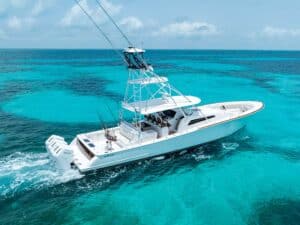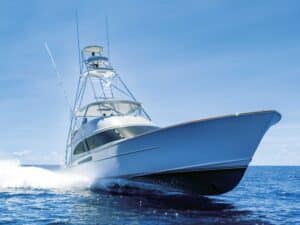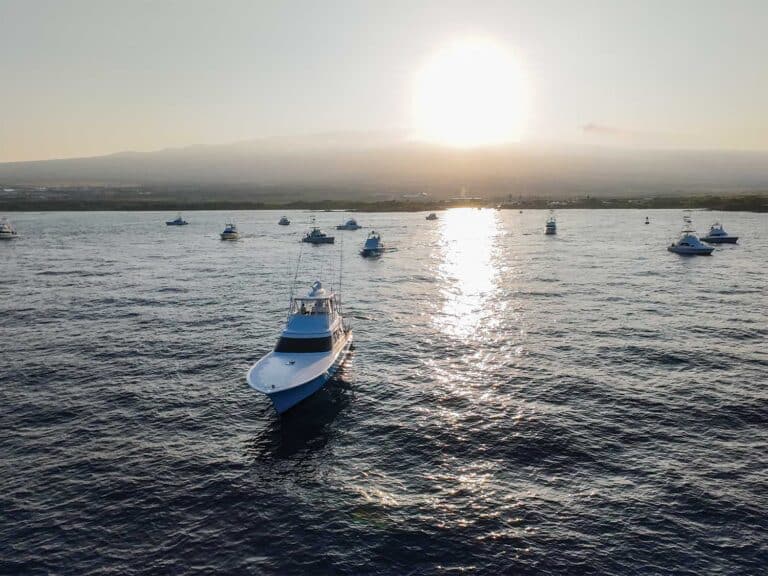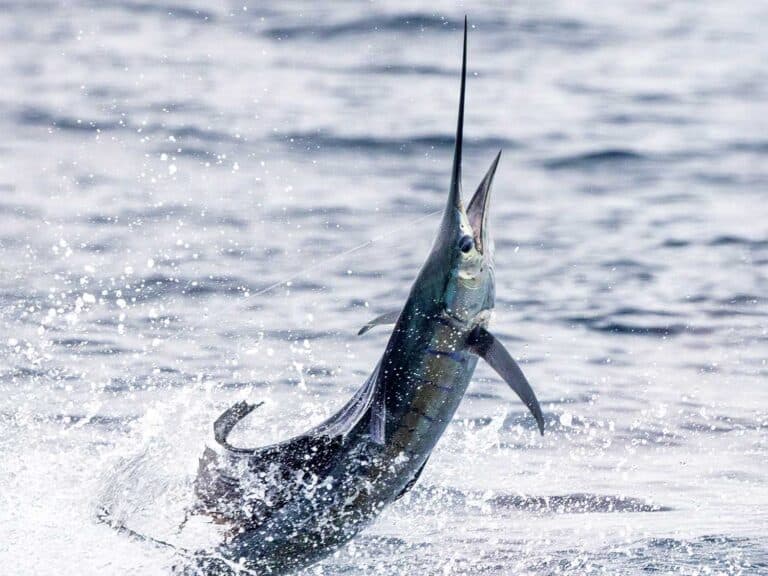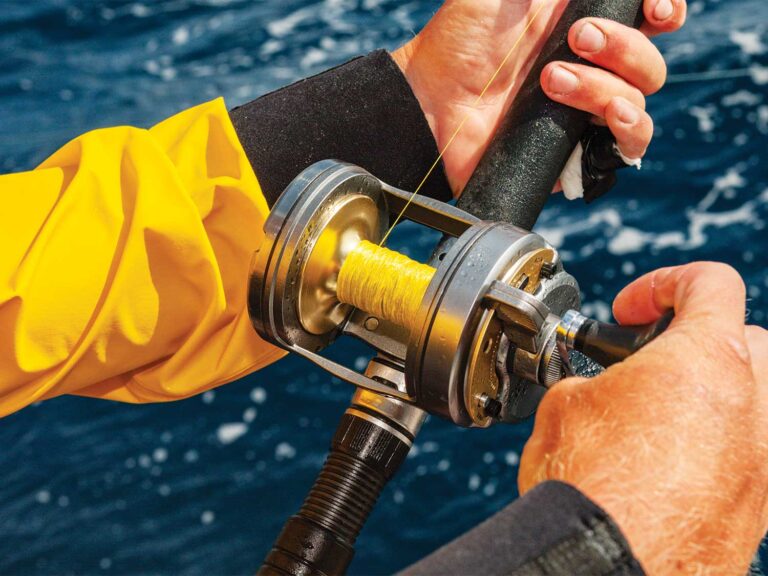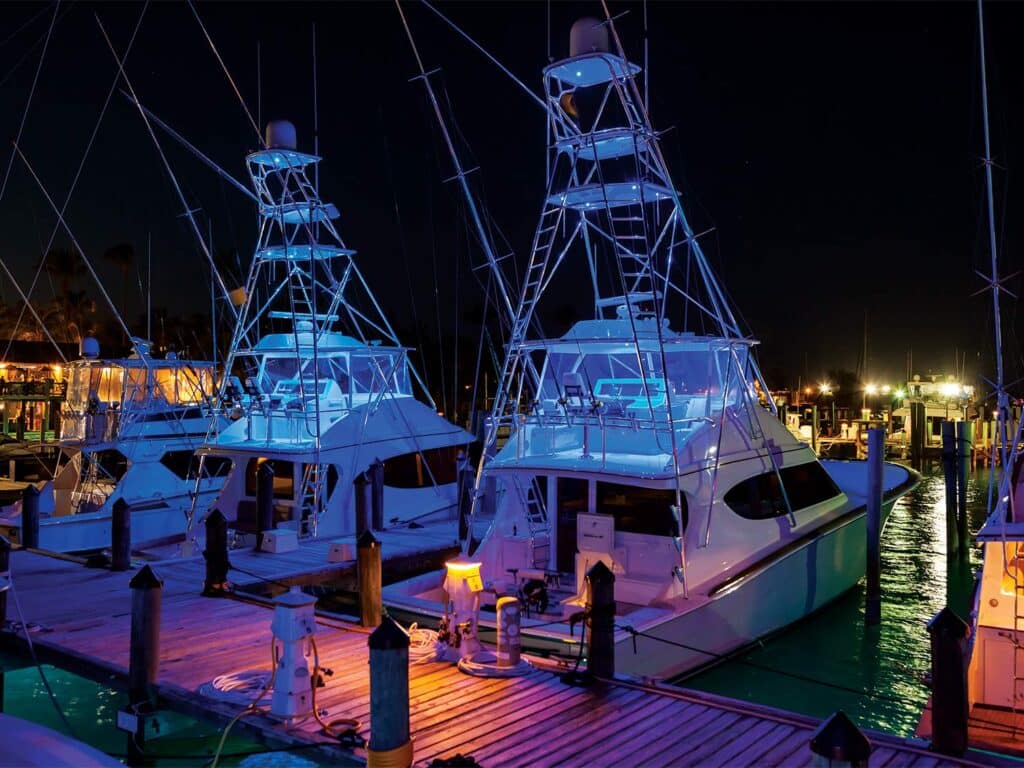
Subscribe to Marlin magazine and get a year of highly collectible, keepsake editions – plus access to the digital edition and archives. Sign up for the free Marlin email newsletter.
If you walk the docks of any nice marina—especially on a Friday or Saturday night—you are likely to see a pretty amazing display of exterior lighting on the boats. It is astounding to me just how far it’s progressed, and it is primarily due to the introduction and evolution of LED lighting. This display of lighting typically carries on through the interior of these boats as well. Done right, it is the absolute perfect accent to the finished masterpieces that we call today’s sport-fishing boats.
What is LED lighting, and what makes it so much better than its halogen/incandescent counterparts? LED is simply an abbreviation for light-emitting diode, and it’s a form of lighting that produces light up to 90 percent more efficiently than its incandescent counterpart. Electrical current passes through a microchip, which illuminates the tiny light sources we call LEDs, and the result is visible light. By using LED lighting on your vessel, you are greatly reducing the amount of energy you need to create in order to illuminate your boat. Aside from this, LEDs won’t generate the unnecessary and dangerous heat that halogen bulbs do.
The Rise of a New Style
LED lighting did not start becoming popular until around 2008, so it is likely if your boat was built anytime before 2010, you still have the old-school halogen lighting. This type of lighting is more dangerous and inefficient than most realize. The two largest issues with any non-LED lighting are the excessive power consumption and the heat it generates. I’ve heard numerous stories of people stuffing bags and pillows in one of the bunks directly under a hot halogen light, which over time would ignite the material and become a major fire hazard. If you haven’t already done so, it is time to at least consider making the switch to LEDs on your boat. But with so many options, from courtesy and interior lights to exterior and deck lights as well as engine room lighting, how do you determine what is best for your situation?
Retrofitting to LED
We are now at the point where many of the old-style bulbs can simply be replaced with new LED bulbs using the same fixtures. This is a simple, cost-effective solution as opposed to changing out drivers, lighting fixtures and switches. It is a good place to start, especially for interior lighting and also any navigation lights. There are LED bulbs available for replacements of nearly every style of bulb out there now. Just be sure to match the voltage requirements.
A replacement LED light bulb will run you anywhere from $10 to $50, but it will also last a long time. Just a note: I have yet to be able to get these replacement LEDs in an old dimmable halogen system where the dimming feature still worked with the replacement LEDs. So if dimming is important, then you will likely need to replace the entire system.
If you want to change out everything, this is where things get expensive. Not only are you changing out switches and fixtures (some of which can run into $200-plus per piece), but you may even have to go as far as changing out and/or reconfiguring your headliners and possibly even wiring. If you are trying to change out exterior lighting like overhead cockpit lighting, navigation lights and more, it is likely that some paint and fiberglass work will be needed. Most of the time your new LED lighting will have a much smaller footprint than its halogen counterpart. The benefit of going this route is you will have a system that should last a lifetime.
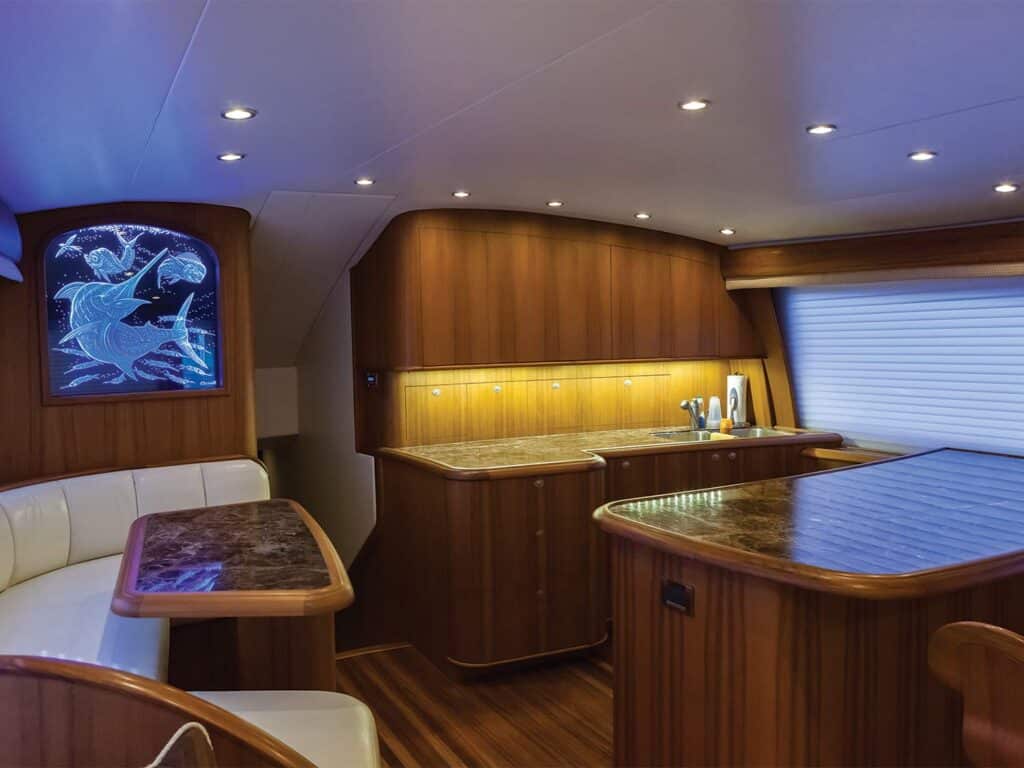
Always be aware of the good stuff versus the cheap stuff, especially when it comes to exterior lighting on your vessel like navigation and courtesy lights. These are exposed to the harsh saltwater environment, and you need to be sure that the LED lighting and fixtures you are buying are made of good components, sealed, waterproof and, in some instances, even shock resistant. Basically, don’t cheap out on your exterior lights, especially any that are meant for navigational purposes.
Living in Color
With these new LEDs, aside from the aforementioned benefits, we also have far more options with lighting colors. Before we get into the wide array of color options, let’s cover the difference in warm white and cool white. Each has its function on a boat. Cool white looks great in areas where it will get a solid reflection, such as where it will shine on beautifully polished paint and finished fiberglass. This makes it great for exterior courtesy lighting. I also like this in the engine room, as it tends to be the brighter of the two white color options. The warm white is more often favored for interiors, especially against those warm wood finishes. It is preferred for reading, as it is not as harsh on the eyes and also more closely mimics the glow of a halogen light.
Now there are plenty of options out there for multicolored lights, allowing us to choose any color in the spectrum, making for great exterior courtesy lighting. Some may even choose to use these multicolored lighting options on boat interiors as accent lighting as well.
LEDs can be quite bright, so I recommend a dimmable option for courtesy lighting. Some lights ramp up after they are turned on, and while they are ramping up, you can turn the switches off and back on to have them maintain that brightness. This will help you achieve the best lighting for your eyes. The last thing you want to do is blind your guests who may be stepping onto and off of the boat at the dock.
Here is an important side note: Make sure when you are underway in the dark to be mindful of what color lights you have on. Using blue lighting can get you in trouble while underway, as that is the color reserved for law enforcement. Navigation lights are there not only to help people see you, but also to determine your course and speed, so any additional exterior lights that are on while you are underway should be kept to a minimum outside of your navigation lights.
Read Next: Underwater Lighting Solutions
Light up the Night
Last but not least is underwater lighting. There are two uses for this lighting: to help attract more fish around your boat for night-fishing scenarios, or simply to give your boat that beautiful glow and wow factor at the dock. There are so many underwater lighting options these days, so be sure to do your homework on which ones are the right ones for your application. Also take note of how they are to be mounted and if they can actually be mounted where you want them to be on your boat.
Whatever boat you may have, if you are still using the old-style halogen lighting anywhere on your vessel, you are doing yourself and your electrical systems a disservice by not making the switch to LED lighting. The sustainability and versatility of LED lighting is unmatched.


